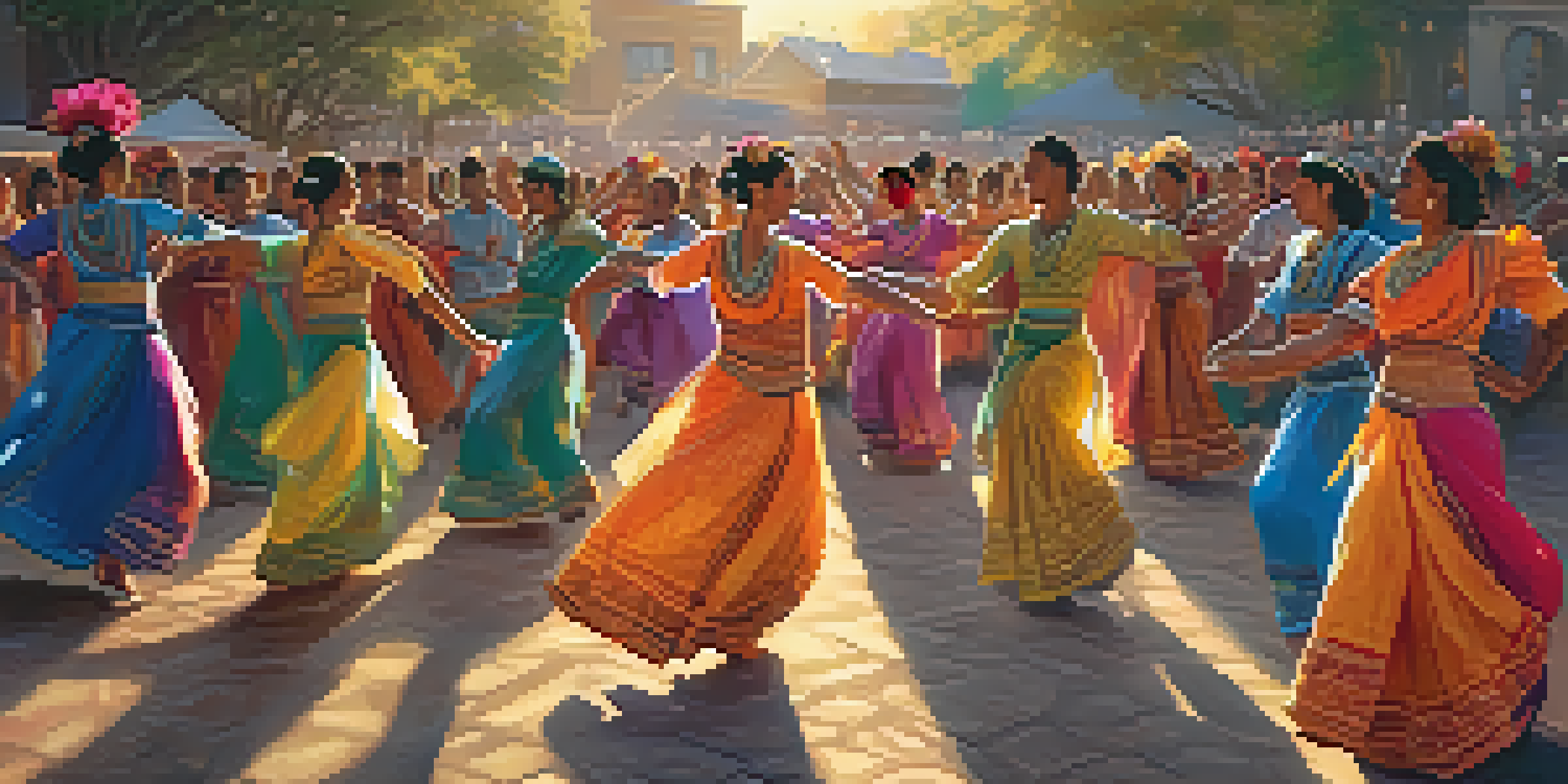The Impact of Dance Performances on Community Identity

Dance as a Reflection of Cultural Heritage
Dance is a vibrant expression of cultural heritage, often serving as a living history. Through various styles, communities showcase their unique traditions, storytelling, and values. For example, traditional folk dances often celebrate specific events, seasons, or historical moments, linking generations together. This connection fosters pride and reinforces a shared identity among community members.
Building Community Bonds Through Collaboration
Dance performances often require collaboration, bringing diverse groups together for a common purpose. When community members join forces to create a performance, they strengthen their relationships and build trust. This bonding experience can lead to a greater sense of belonging and unity. Imagine a local dance troupe where individuals from different backgrounds come together; the end result is not just a performance, but a tapestry of shared experiences.
Dance Strengthens Community Bonds
Collaborative dance performances foster trust and unity among community members, creating a rich tapestry of shared experiences.
Dance as a Tool for Social Change
Dance can be a powerful tool for raising awareness about social issues within a community. Many choreographers use their art to address topics like inequality, mental health, or environmental concerns. By engaging audiences emotionally, these performances can inspire action and foster dialogue. For instance, a dance piece focused on climate change can provoke thought and motivate community members to engage in environmental initiatives.
Promoting Inclusivity and Diversity Through Dance
Dance performances can serve as a platform for promoting inclusivity and celebrating diversity. By showcasing a variety of dance styles, communities can highlight different cultures and traditions. This not only educates participants and audiences but also fosters mutual respect. When a community embraces its diverse dance expressions, it reflects a commitment to inclusivity, making everyone feel valued and heard.
Dance Promotes Inclusivity and Diversity
By showcasing various dance styles, communities celebrate diverse cultures, promoting respect and understanding among participants and audiences.
Dance as a Catalyst for Local Economic Growth
Local dance performances can significantly contribute to community economic growth. Events attract visitors, which in turn supports local businesses, from restaurants to hotels. Additionally, dance festivals and competitions can create job opportunities for performers, choreographers, and technicians. This economic boost helps to solidify the community's identity as a vibrant cultural hub.
Strengthening Intergenerational Connections Through Dance
Dance performances often bridge the gap between generations, allowing older and younger community members to connect. Elders can pass down traditional movements and stories, while younger dancers can bring fresh perspectives. This exchange not only preserves cultural practices but also fosters mutual respect and understanding. By participating together, families and friends create lasting memories that reinforce community ties.
Dance Drives Local Economic Growth
Local dance events attract visitors, supporting businesses and creating job opportunities, thus enhancing the community's cultural identity.
Creating Spaces for Expression and Healing
Dance performances provide a space for personal expression and collective healing within communities. They can serve as an outlet for emotions, allowing participants to share their experiences and struggles. For example, community dance workshops can be therapeutic, helping individuals process grief or trauma. These shared experiences foster empathy and create a supportive environment where everyone feels safe to express themselves.
The Lasting Legacy of Dance in Community Identity
The impact of dance performances on community identity can have a lasting legacy. As communities evolve, these performances can adapt while still honoring their roots. They serve as a reminder of shared history, values, and aspirations, creating a sense of continuity. Ultimately, the legacy of dance within a community shapes not only its present identity but also its future trajectory.